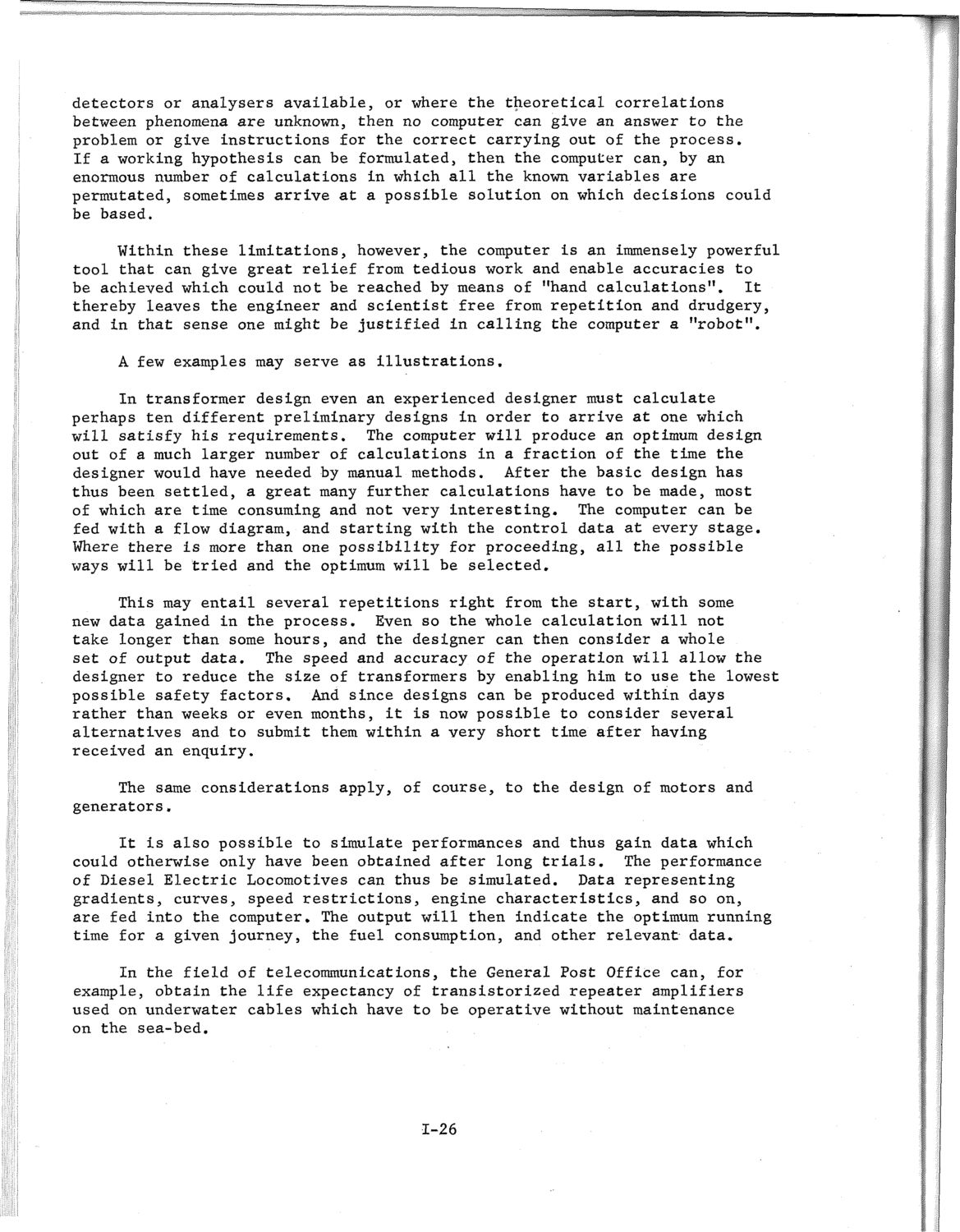| |
| |
Caption: SWE - Proceedings of the First International Conference of Women Engineers and Scientists
This is a reduced-resolution page image for fast online browsing.

EXTRACTED TEXT FROM PAGE:
detectors or analysers available, or where the theoretical correlations between phenomena are unknown, then no computer can give an answer to the problem or give instructions for the correct carrying out of the process. If a working hypothesis can be formulated, then the computer can, by an enormous number of calculations in which all the known variables are permutated, sometimes arrive at a possible solution on which decisions could be based. Within these limitations, however, the computer is an immensely powerful tool that can give great relief from tedious work and enable accuracies to be achieved which could not be reached by means of "hand calculations". It thereby leaves the engineer and scientist free from repetition and drudgery, and in that sense one might be justified in calling the computer a "robot". A few examples may serve as illustrations. In transformer design even an experienced designer must calculate perhaps ten different preliminary designs in order to arrive at one which will satisfy his requirements. The computer will produce an optimum design out of a much larger number of calculations in a fraction of the time the designer would have needed by manual methods. After the basic design has thus been settled, a great many further calculations have to be made, most of which are time consuming and not very interesting. The computer can be fed with a flow diagram, and starting with the control data at every stage. Where there is more than one possibility for proceeding, all the possible ways will be tried and the optimum will be selected. This may entail several repetitions right from the start, with some new data gained in the process. Even so the whole calculation will not take longer than some hours, and the designer can then consider a whole set of output data. The speed and accuracy of the operation will allow the designer to reduce the size of transformers by enabling him to use the lowest possible safety factors. And since designs can be produced within days rather than weeks or even months, it is now possible to consider several alternatives and to submit them within a very short time after having received an enquiry. The same considerations apply, of course, to the design of motors and generators. It is also possible to simulate performances and thus gain data which could otherwise only have been obtained after long trials. The performance of Diesel Electric Locomotives can thus be simulated. Data representing gradients, curves, speed restrictions, engine characteristics, and so on, are fed into the computer. The output will then indicate the optimum running time for a given journey, the fuel consumption, and other relevant data. In the field of telecommunications, the General Post Office can, for example, obtain the life expectancy of transistorized repeater amplifiers used on underwater cables which have to be operative without maintenance on the sea-bed. 1-26
| |